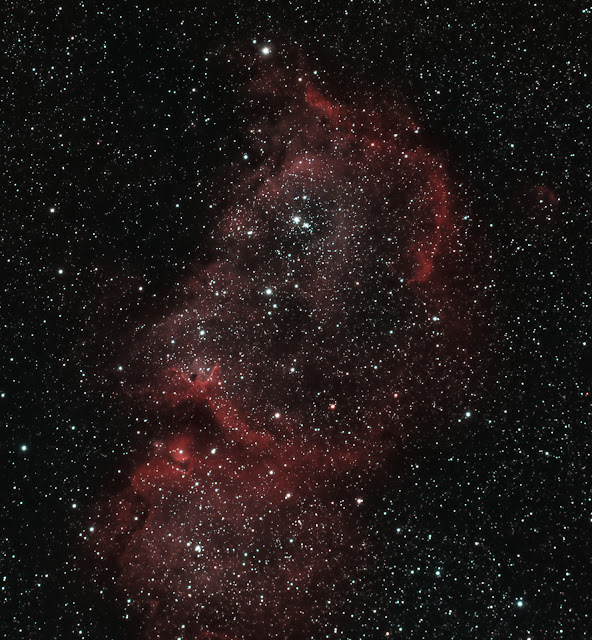Slow Start with the 26c - Part 2
Slow Start with the 26c - Part 2
Something's clicked. A little teaser on M33 a few weeks ago helped me remember the pure enjoyment I get from creating and sharing my images. Another clear night in the offering and another opportunity to get out there imaging again.
One key thing I have noticed in difference between my old 183c Hypercam and my new 26c is the scaling of my images. By that I mean that when using the 26c, I see a much larger patch of sky than what I do with the 183c. At least I think I do anyway. When I used my 183c, I often ruled out some targets as they were seemingly too big to fit in the frame of the camera. This included targets such as the Heart and Soul nebulae. Indeed in this post from December 2019, I imaged the Fish Head nebula (IC 1795) and without any significant cropping, found that it fitted in the imaging frame quite well. As you may know, IC 1795 is only a small part of the much larger Heart nebula. So, logically, the whole of the Heart nebula wasn't going to fit into a single frame and since I haven't got around to learning about creating mosaics I always dismissed it as an achievable imaging target. Often imaged together as part of mosaics, the Soul nebula is next to the Heart nebula, and albeit slightly smaller is still significantly larger than IC 1795.
To check this out, I looked it up on my planetarium software (Carte du Ciel). In the software is a feature where you can enter your camera's sensor details, your reducer/flattener details and the focal length of your telescope. This produces a square of a scaled size on Carte du Ciel representative of the area which will be captured with your camera, allowing you to judge to a reasonable degree of certainty whether or not the full extent of a target will fit in a single frame. It was this method I used to clarify what I wanted to image next.
Seeing that the Soul nebula (IC 1848) should mostly fit in my field of view and knowing that I wanted to get some time on nebulae under my belt before galaxy season once again comes knocking on the door, I went for it.
In total, I acquired 116 frames of 98 seconds each giving around 3 hours and 9 minutes of total data. By the time I dropped a few trashed frames, it was around 3 hours integrated time. On this instance, I stuck with the quadband filter. IC 1848 is very rich in HA wavelengths so in a CMOS colour camera always shows up well in red.
After all the data gathering was complete, it was time to get stuck back into PixInsight and do some processing. Other than a few days before to do a quick process of M33 noted in my last post, it's been a while, so it's taking a bit of time to get back into the swing of using it again. Thankfully, I have a couple of workflows documented, so it was a case of just following some instructions. And here is the final result...
 |
| IC 1848 - The Soul Nebula |
This is a cropped image of the actual one produced. It was evident after stacking that the camera could have been rotated by 90 degrees in the focuser which would have given a much better frame. Nevertheless a vast majority of the nebula fitted in the field of view, only losing a small proportion at the bottom of the screen. As you can see, most of the image is red in colour due to that HA, but there's a lot of detail to get at in the image.
The details:
3 hours of 98 second sub frames.
50 flat frames
55 dark frames
Processed in PixInsight and GIMP
Altair Astro 26c camera
AA Quadband filter
AA 80 ED-R Starwave refractor
Guided with PHD2
In my next post, discover why this just wasn't good enough.....


Comments
Post a Comment